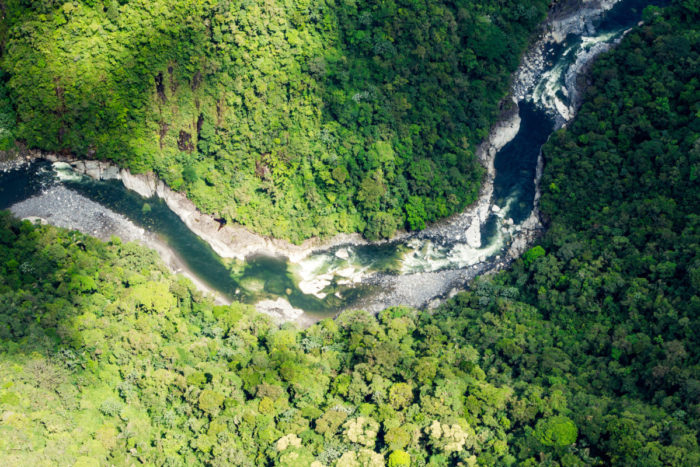A return to former deforestation rates in the Amazon would substantially reduce rainfall
Continued deforestation of the Amazon rainforest could reduce rainfall over the region, according to a new study, with consequences for forest ecosystems and local economies.

Forests affect the fluxes of moisture and energy between the land surface and the atmosphere which can affect rainfall, both locally and downwind of the forest. Large scale removal of trees, such as during deforestation, can therefore strongly affect the amount of rain falling on any remaining forests.
A new study from LEAF scientists in the Institute for Climate and Atmospheric Science (ICAS), part of the School of Earth and Environment, demonstrates that climate models robustly indicate that continued deforestation of the Amazon would substantially reduce rainfall in the region.
Deforestation of the Brazilian Amazon started on a large scale in the 1970s when the opening of the Trans-Amazonian Highway made the interior of the Amazon forest accessible for the first time. Deforestation rates in Brazil in particular, home to two-thirds of the Amazon rainforest, accelerated throughout the following decades, reaching a peak in 2004. That year, Brazil cleared 2.7 million hectares of forest (the equivalent of 7,400 hectares a day), according to Brazil’s National Institute for Space Research (INPE). At that rate, researchers estimated nearly half of the original forest cover would be gone by 2050.
The effects of forest clearing can be difficult to quantify, said Dr Luis Garcia-Carreras, a co-author of the new study. For this research, the authors analysed data from 44 previous studies, featuring more than 90 global and regional climate model simulations, to determine whether they agreed on what the impacts of deforestation would be. “We wanted to make a comprehensive assessment using all of the information that was available until now to give us the best estimate of what the impact of deforestation would be on rainfall,” said Garcia-Carreras.
The researchers found that deforestation so far has likely reduced average rainfall over the Amazon by around 2%, but this is less than the variability experienced from year to year so is difficult to detect in observations.
“We found a very consistent picture that deforestation is going to drive a reduction in rainfall, and that was consistent virtually across all models and all studies that we analyzed,” Garcia-Carreras said. “And we found a picture that increasing deforestation drove larger reductions in rainfall.”
The Brazilian government have been successful in reducing deforestation rates over the past decade, but this new study suggests that if deforestation rates returned to their pre-2004 level, annual rainfall could reduce by 8% by 2050, and what are currently considered drought years could become the norm.
Recent droughts in the Amazon in 2005 and 2010 showed that sustained reductions in rainfall have important consequences for Brazil’s economy, according to the study's lead author Dr Dominick Spracklen, “Less rain could affect agriculture, which currently generates $15 billion a year for Brazil’s economy, and hydropower, which generates 65 percent of Brazil’s electricity”.
Deforestation rates began to decline in 2005, and by 2010, forest clearing rates had dropped to about 25 percent of 2004 levels, according to INPE. During the same time period, however, deforestation in other Amazonian countries increased, “With a high global demand for increased beef and soy production, it’s likely these countries will continue clearing forest and possible Brazil will relax its forest protection laws to meet those demands” Spracklen said.
“One of the big environmental success stories of the past decade has been the reduction in deforestation in the Amazon, within Brazil,” said Spracklen, "but I think at the moment we’re at a kind of cusp, where there’s continued pressure within Brazil to relax some of the forest laws. Maintaining low deforestation rates in the Amazon is essential to ensure survival of the Amazon forest."
Read the full study here.
